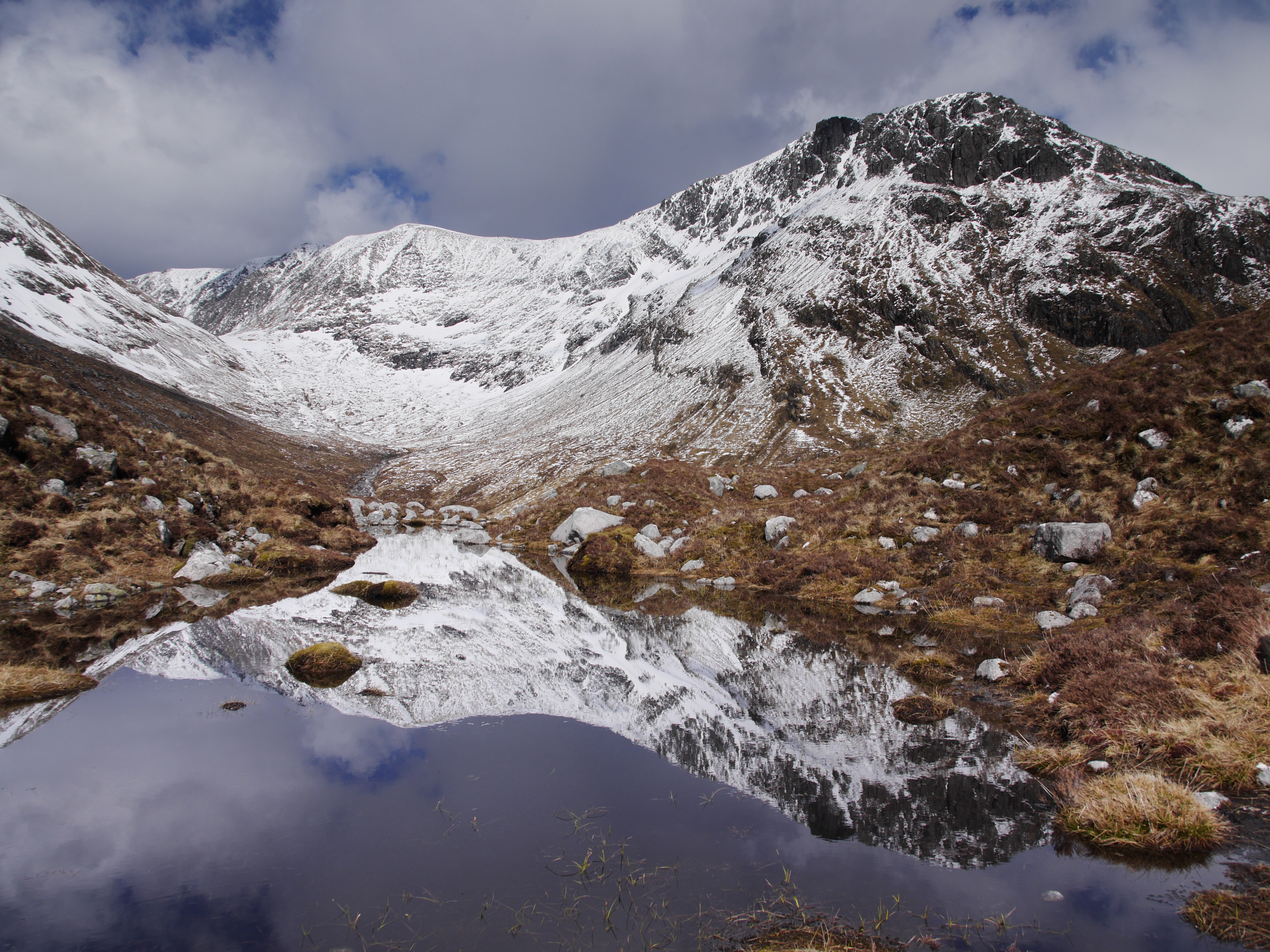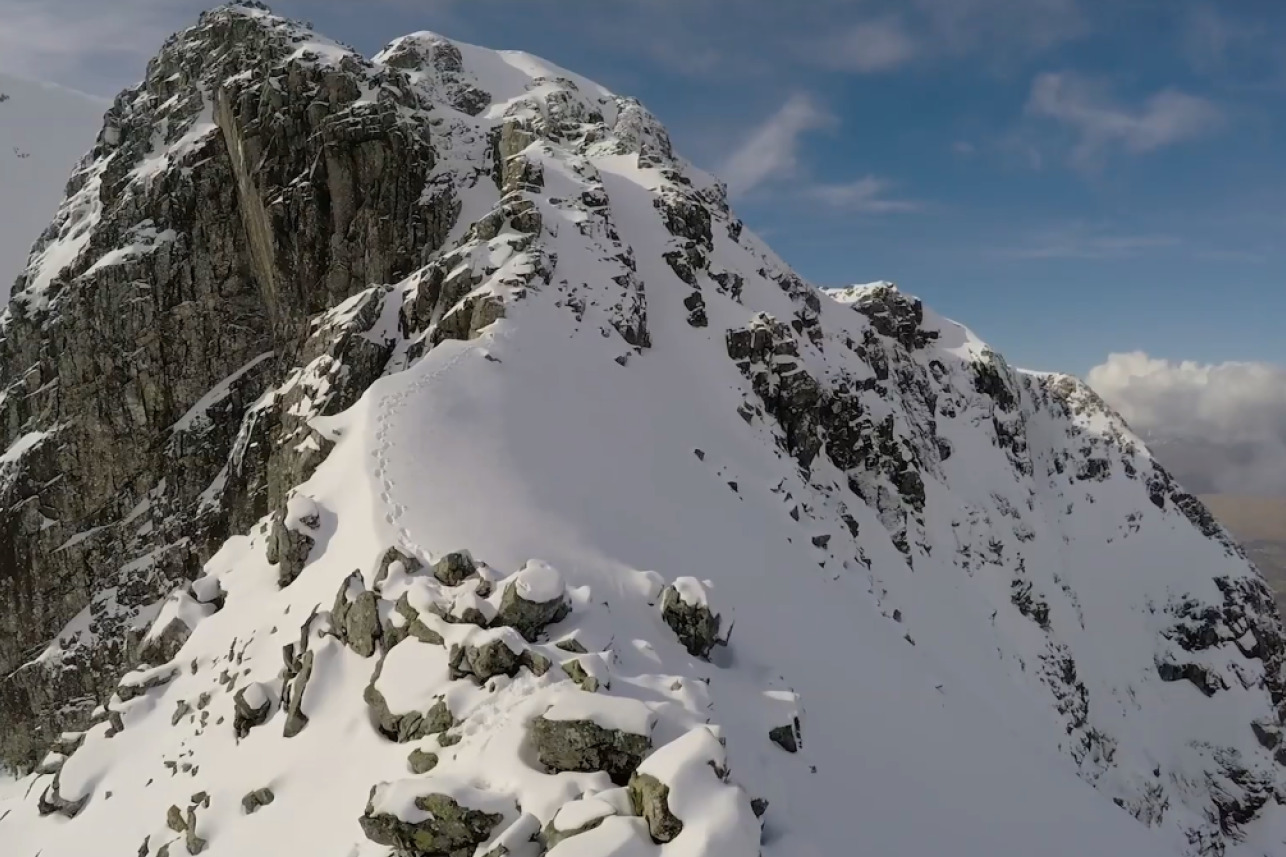The Beithir of Ben Nevis
As this Lunar New Year brings us the Year of the Dragon, we delve into the folklore surrounding some of our own Scottish serpent-like creatures.

^ The Aonachs from Meall Cumhann bealach © Alex Gillespie
For centuries, tales depicting dragons have appeared within almost all cultures across the world. Coming from the Latin ‘draco’, meaning “huge serpent”, these mythical monsters are thought to have originated from an innate fear of snakes, stemming from our primal ancestral subconscious fearing the risk of a potentially life-threatening attack. Despite becoming a representation of tyranny and destruction, dragons were recurrently used in folklore to portray power and wisdom, often depicted in Celtic artwork on flags and shields to bring strength and protection. With these strong connections, it is no wonder that dragons continue to be popular creatures.
As Scotland is made up of around 900 islands, it is understandable that the majority of folktales involve water in some way. Therefore, it is no surprise that the Scottish dragon is considered one of the ‘fuath’, a class of malevolent water spirits in Scottish Highland folklore. Known as a ‘beithir’ in Scottish Gaelic, the Scottish dragon generally has no wings or fiery breath and is described as "the largest and most deadly kind of serpent". This elusive creature is said to have a venomous sting and can be found dwelling in remote mountainous caves and corries, usually within close reach to a river or loch. According to the tales, if you are unlucky enough to be struck by its sting, you must reach the nearest body of water before the beithir or else your fate is doomed.
It has been suggested that there may be a connection between the beithir and another mythological character, Cailleach Bheur. The Cailleach, also known as the Queen of Winter, is a seasonal deity with many forms that rules the winter months, while her counter deity Brìghde rules the summer months. One story depicting the coming of spring from Gaelic folklore links the dragon and the hag as one being, taking place at her “mountain throne” atop Ben Nevis.

^ Ice formation at the summit of Ben Nevis © Nathan Berrie
The Cailleach was known for being a jealous and volatile deity, each year making a futile attempt to stop the oncoming spring by demanding the destruction of any green shoots and knocking new buds off the trees with her hammer. One year, envious of her beauty, she captured a fair maiden called Brìghde, and imprisoned her in the depths of Ben Nevis, forcing her to do difficult and tedious tasks. Meanwhile, the Cailleach’s fairest son Angus, woke from a dream in which he envisioned his soulmate, prompting him to embark on a quest. After days of searching for the girl in his vision, Angus arrived at Ben Nevis on February 1st,, and discovered his true love was in fact the imprisoned Brìghde. Upon being freed from the Cailleach’s clutches, Brìghde stepped out onto the frozen grass and as she walked the snow began to melt and spring flowers sprouted around her footprints. This led to the day being known as Là Fhèill Brìghde, Saint Brigid's Day in Scottish Gaelic, or Imbolc, marking the beginning of spring.
However, the Queen of Winter was not ready to let her reign to be taken away so easily and raged a war against Angus for freeing Brìghde. Over the weeks, the Cailleach used her transformational powers to shift between her forms, causing destruction across the land. It is said that in one attempt to defeat her while in a snake form, Angus managed to split her in half. Unfortunately, as the pieces were not properly distanced or destroyed, the two halves came together, returning the Cailleach to life as a beithir. With her newfound power, the Cailleach made a final effort against the inevitable coming of spring, raising three days of heavy snow, wild winds, and fierce thunderstorms. However, despite having the force of a dragon within her, the Queen of Winter’s reign was dwindling as new life spread across the land, draining her of her own strength. Finally, after an arduous battle, the Cailleach gave in, throwing her magic hammer beneath a holly tree and fleeing to the west before falling into a deep slumber.
Celtic mythology is rich in symbolism and through the years many stories have been woven together to create a plethora of wonderful tales full of captivating and striking imagery. Sharing local folklore reinforces how intertwined we are with the natural world and provides a sense of belonging, becoming an invaluable tool to help connect people and communities with wild places.
- Like this? Read more Scottish myths and legends at Folklore Scotland.


